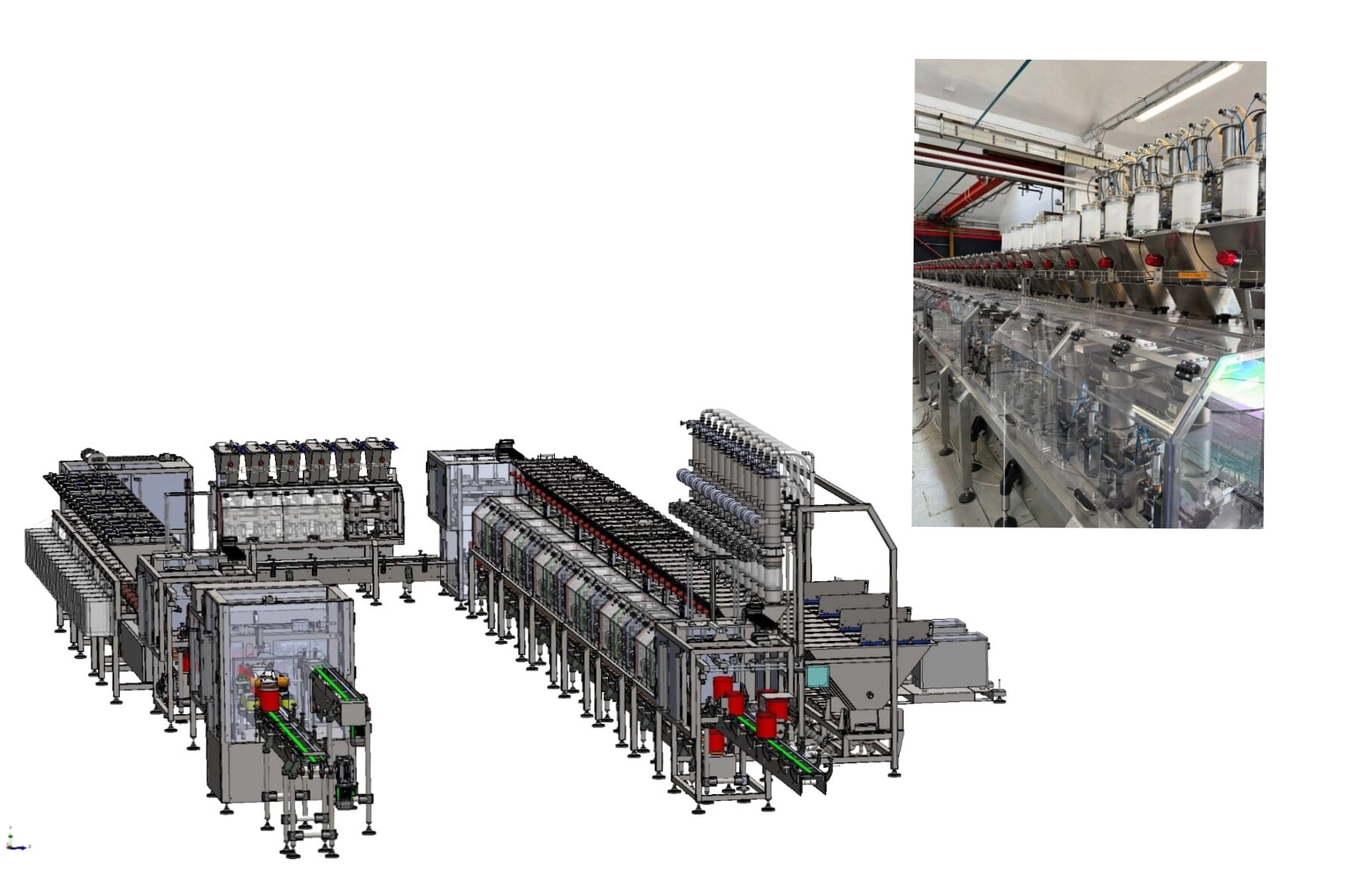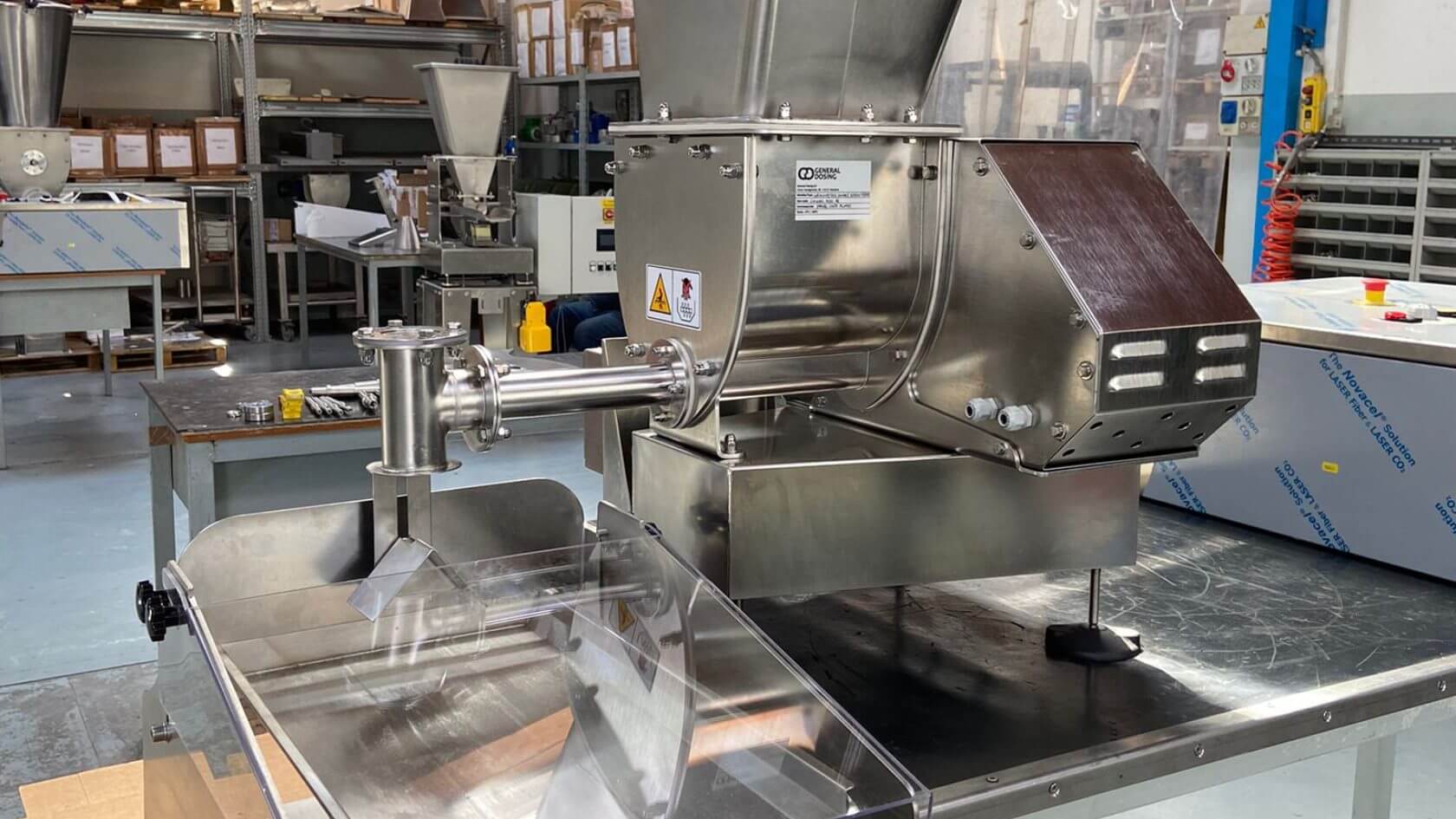A Multi-Ingredient Dosing Station for Supplements (Globules)
When a pharmaceutical company specializing in the production of homeopathic globules contacted us, they had a clear goal: to automate the dosing process of ingredients into suitable containers while maintaining maximum precision and flexibility, without compromising quality.
The Challenge
The client’s main requirements were:
Manage recipes made up of many different ingredients;
Ensure that each package contained the correct amounts, with no waste;
Meet dosing performance requirements ranging from a minimum of 1 gram to a maximum of 1.5 kg with a precision of 0.5 grams, and achieve one complete recipe every 15 seconds;
Maintain flexibility for both small and large doses (from 1 g up to 4 kg per recipe);
Optimize the available space, with a compact yet functional layout.
An additional constraint was the material: the containers had to be antistatic, in order to avoid issues caused by static electricity during the process.
The Solution
We designed a modular multi-ingredient dosing station, consisting of 60 vibrating feeders arranged along a U-shaped conveyor line. This setup allows access from all sides while still ensuring a compact layout.
Each feeder is independent and works in coordination with the others: it doses the product into a small weighing hopper equipped with load cells, which weigh the quantity required by the recipe. Only when the container is correctly positioned under the weighing hopper is the ingredient released.
The system is designed to automatically adapt to recipe requirements:
if the quantity exceeds the volume of a single container, the recipe is divided among multiple containers;
if necessary, two feeders can be used for the same ingredient to speed up the cycle without losing precision.
Container transport is fully automated: they are loaded onto a rotary table at the entrance of the line, then picked up by a pick-and-place device and positioned on the conveyor belt. Containers are moved forward at a constant pitch, positioning them under each feeder. In addition to weighing each ingredient, the line is equipped with a final weight control of the total dose. If the batch does not meet tolerance limits, the system automatically rejects it.
Once filled and capped, the containers pass through a tumbler mixing device to ensure perfect homogenization of the contents. Finally, the containers arrive at a collection rotary table, ready for final packaging.
The Results
With this solution, the company achieved several tangible benefits:
Absolute dosing precision;
Reduced production times, thanks to automatic recipe management and continuous flow;
Operational flexibility, with the ability to adapt the line to different recipes without complex adjustments;
Greater safety and quality, thanks to weight control and automatic rejection of out-of-tolerance batches.
Conclusion
This project demonstrates how a well-designed multi-ingredient dosing technology can radically transform a production process: from manual and fragmented, to automated, precise, and scalable.




